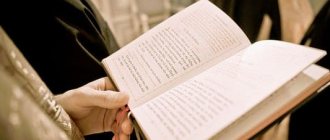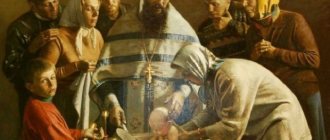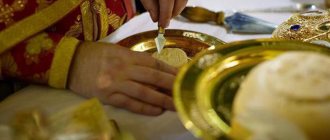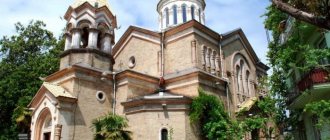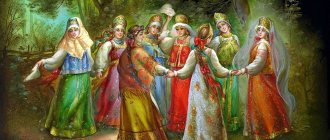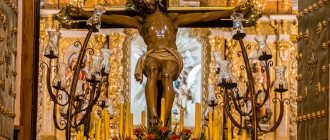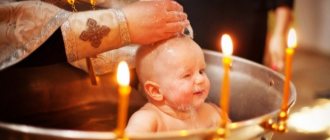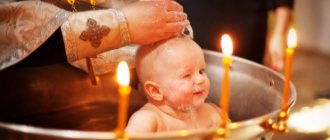What does prostration mean?
The meaning of kneeling is to express submission and humility before the Almighty. The ritual is also intended to show the Creator our love, the reverence that we feel for Him.
Orthodox Christians call prostration the prayer of the body.
According to Holy Scripture, Jesus prayed while bowing down, thereby showing us an example of how to properly communicate with the Lord. Orthodox theologians interpret worship as the fall of the human essence, and rising to its feet as deliverance from sins.
About bowing at the exclamation: “The Catechumen, bow your heads to the Lord”
Spiritual growth requires deepening knowledge in the field of liturgics, but before deepening it, you need to have it at least in its infancy. Nowadays, during services, you can often notice how, at the exclamation: “By the Catechumen, bow your heads to the Lord,” some of the regular parishioners bow their heads, thereby confessing themselves to be unbaptized people. However, after the next exclamation: “Elites of the catechumen, come out” - none of them, of course, leaves the temple, thereby showing obvious inconsistency. Do people understand what they are praying for and what they are participating in? Perhaps this is a minor misunderstanding, but it is alarming, and it is indicative: for years parishioners have not bothered to ask what the meaning of their actions, their own prayer is. But the above-mentioned exclamations are preceded by the litany “for the catechumens,” which fully explains the essence of the matter: “Believed, let us pray for the catechumens,” they call upon us, “so that the Lord... will unite them to His Holy... Church.” In spiritual terms, the matter is even more serious; there are no trifles here. Those who, bowing their heads, do not themselves know whether they are faithful or catechumens, should understand that this is not an empty nod, that the priest at this moment is praying for them, who have bowed their heads, in order to be worthy of baptism, to become members of the Church: “Lord... look upon Thy servants, the catechumens, who have bowed their necks to Thee... unite them with Thy Holy Ones... the Church... make them number among Thy chosen flock.” If at this moment a baptized person stands with his head bowed, if at the same time he believes in the mystical power of the priest’s prayer, then he either unwittingly blasphemes, disparaging prayer, or, unwittingly classifying himself among the catechumens, renounces his baptism.
This is the simplest example, but it is puzzling: if parishioners do not know the meaning of the simplest litany, then what significance is attached to other, more complex moments of the service, what meaning is put into them, what is the general level of understanding of church sacred rites?
What can we say about indifference to sacred statutory norms, when, for example, not only ignorant laymen, but also shepherds and monks neglect the canonical rite of temporarily abolishing prostrations and genuflections. But such restrictions are not an external formality. “Do not kneel” at certain moments St. Basil the Great refers to the norms of “the sacramental and liturgical life of the Church.” Everything in the Orthodox ritual carries a deep theological and ascetic meaning; it touches on the mysterious internal interaction between soul and body. Since not only the mind, but “the entire mental and physical being of a person participates in worship,” the adequacy of each movement is important. Hence the special symbolic language of gesture, which “the Church included in worship as an organic part of prayer,” which includes bows and kneeling - “a silent language where the word is replaced by movement.” Therefore, the meaningful execution of ritual actions and strict adherence to the canonical order are so important.
Violation of the order of bows is far from a trifle. Isn’t this a sign of the emasculation of church life, the emergence of a cult of ritual belief, when the observance of rites turns into “meaningless external actions” or, worse, when they are given a false ritual superstitious meaning? The Fathers warn that “without deepening one’s knowledge in this area, a person can easily fall into a habit that is deadening and devastating.” To prevent spiritual life from degenerating into meaningless ritualism, “it is necessary to continually grow in the knowledge of God and not allow the liturgy to turn into a detail of our pious life. It was precisely because it became a mass instead of a liturgy that we all experienced a deep crisis.”
Deep church involvement allows you to get closer to doing smart things.
Notes
Catechumens – those to whom it was announced, i.e. taught, the teaching of the Church, people who have believed in Christ and are preparing for the sacrament of baptism. Divine Liturgy. Prayer for the catechumens. Some modern pastors say that it is permissible for a Christian to deliberately bow his head while praying for the catechumens, thereby, as it were, showing his humility. One venerable archpriest, who acted in exactly this way, admitted, in response to the bewilderment of his flock, that he bowed his head during this prayer out of humility, since he considered himself “in matters of doctrine” to have barely begun “the process of catechumen,” and “in life according to faith – who have not yet started this process.” But confusion remains. When they do something that is not required by the order of worship, thereby attracting general attention to themselves, a simple question arises: is it necessary to demonstrate one’s humility to others, is this not contrary to the very spirit of humility, and does it not turn into its opposite? Another, no less venerable pastor believes that “although we are baptized, we are not sufficiently churched, and we do not act according to the grace of baptism,” on this basis, they say, “you can put yourself in the ranks of the catechumens and lower your head.” This raises another question. Of course, we are all unworthy of the title of Christian, it is useful to realize this, but is it worthy for a Christian to imagine himself deprived of the inalienable grace of baptism? Not to mention the fact that a person who is not sufficiently churched cannot in any way be equated with an unbaptized person; for this to happen, one would have to abandon dogmatic consciousness. In addition, according to this logic, in a minute, in response to the exclamation “catechumen, depart,” you will have to, for the sake of humility, imagine yourself leaving the service, and in response to the exclamation “else faithful... Let us pray to the Lord,” you will need to not only remember that we are baptized, but imagine yourself and churchgoers and “walking by grace.” But how can one receive communion if one “put oneself in the ranks of the catechumens”?.. Is such a play of fantasy appropriate during the service, instead of realizing the true meaning of liturgical actions and symbols? The symbolism here is not decoration, but a powerful means of spiritual influence; it is dangerous to distort it with arbitrary play of the mind. Orthodox asceticism forbids the praying mind to allow imagination; it calls for fighting it, not cultivating it. Humility, as a living feeling of one’s depravity and insignificance, as a sincere recognition of oneself as the worst among people, has nothing in common with self-hypnosis and pretense. Typicon, based on the Canonical Rule of the VI Ecumenical Council No. 90, which is confirmed by the charter of St. Basil the Great (reg. No. 91) and other decrees, imposes a categorical ban on prostrations and genuflections on Sundays and holidays and at certain moments of worship (Cherubic, Six Psalms, Most Honest, Great Doxology). What is significant is that this statutory prohibition is not the fruit of human invention, but received from above. Back in the 3rd century. it was given by God in revelation through the angel St. Pachomius the Great: “From Saturday evening to Sunday evening, as well as on the days of Pentecost, they do not bend the knee.” Kazansky P.S. History of the Orthodox Monastery... T. 1. P. 238. Lossky V.N. God-vision. M., 2003. P. 677. Rafail (Karelin), archim. The art of dying, or the art of living. M., 2003. pp. 311, 313. The theological and ascetic meaning of kneeling and the meaning of the ban on prostrations - these topics are discussed in the present. ed., vol. 2, 4. Cyprian (Kern), archim. Liturgics. M., 2002. Sophrony (Sakharov), archimandrite. Letters to Russia. Essex; M., 2003. P. 68.
Novikov N.M. Jesus Prayer. Experience of two thousand years. The teaching of the holy fathers and ascetics of piety from antiquity to the present day: Review of ascetic literature in 4 volumes. Vol. 1. Chapter “The Mystery of the Sacraments.” pp. 80–83. Novikov N.M.
Varieties of bows
St. John of Kronstadt called bowing the head a tool that helps to eradicate the pride that is lodged deep in the soul. The Typicon prescribes two types of veneration:
- Small, or waist. This involves bending the body at the waist while lowering the head. As a rule, it is customary to place them during home or congregational prayers.
- Great, or earthly. They represent kneeling, placing your forehead on the floor. For example, during fasting they are placed three times while reading a prayer of repentance.
How to bow correctly
Bows must be made correctly, without disturbing others or getting injured. It is worth remembering the saying: “make a fool pray to God...” When making bows from the waist, one must be wary of the possibility of stretching your back. With good sports training, you need to touch the floor with the fingers of your right hand. But if you have back pain, you can just bow a little. If there are a lot of people in the temple, quite crowded, then there is no need to be zealous and hit your head in the back of the person in front. You can simply bow your head without disturbing anyone.
When bowing to the ground, there is a chance of getting a head injury by hitting the floor hard. Here you should act wisely, bow, lightly touching your head to the floor. There is also a chance of damaging your palms, so you need to land on your bent knuckles. It is advisable to place a rug on the floor.
Special rules for prostrations
Kneeling must be done strictly according to the rules. Before kneeling, make the sign of the cross. Then lower yourself down, touching your head and hands to the floor. If you want to venerate a shrine, cross yourself twice, bow, then again make the sign of the cross and perform worship.
The clergy urge people to bow correctly: slowly, sincerely, at the right moment. The action is performed at the end of the litany or prayer chant. During the reading itself, doing this is strictly prohibited by the Church Charter. Also, one cannot be baptized at the same time as bowing down.
When not to do it
Prostrations cannot always be made. Thus, kneeling is prohibited during the following periods:
- from the day of Great Easter to Pentecost;
- from the Nativity of Christ to the Epiphany;
- during Sunday services, with the exception of the liturgy (worship is performed after the epiclesis and during the removal of the Chalice with the Holy Gifts);
- on red dates of the Orthodox calendar;
- to Yablochny Spas;
- during the first communion.
When can you do it?
As mentioned above, bowing to the ground is not prohibited during the Sunday liturgy. They do it three times:
- during entrance prayers before the throne;
- when laying on the Holy Gifts;
- just before the Eucharist.
It’s not scary if you kneel during a period that is prohibited for such an action - this is not a big mistake.
Author's advice
Differences between bows and bows
Priests recommend studying in advance the traditions and Charter of the temple where you are going to serve. Sometimes the approved canons undergo some changes characteristic of a particular parish. If you are tormented by doubts about the correctness of your actions, do not be afraid to ask the clergy for clarification.
Another way to get things right is to simply observe what other parishioners are doing. To avoid getting into an awkward situation, you don’t need to refuse help or ignore the advice of knowledgeable people. But there is no point in repeating after the nuns who are often present at services - they are guided by their own rules, which are different from the generally accepted ones.
When to be baptized with prostration
According to the Church Charter, you need to make the sign of the cross with kneeling in the following cases:
- three times at the beginning of the liturgy and the same number after it;
- in the words “We thank the Lord”;
- at the end of the chant “We sing to you”;
- after the phrase “And grant us, Master”;
- during both appearances of the Chalice with the Holy Gifts.
You can also be baptized with prostration while saying “Holy of Holies.”
During kneeling, they often make the sign of the cross.
By prostrating yourself before God, you show Him your humility, eradicate pride, and perform an act of repentance. Seeing this, the Almighty will certainly pay His attention to you, bless you and give you mercy.
If you find an error, please select a piece of text and press Ctrl+Enter.
On the inadmissibility of prostrations on Sundays and great holidays
Prostrations to the ground are not allowed on Sundays (20th canon of the 1st and 90th canon of the 6th Ecumenical Councils) and great holidays, on the days from the Nativity of Christ to Epiphany, from Easter to Pentecost, and also to communicants on the day of communion (see .discussion on the forum).
Also see in the Typikon: “[He does not bow down to the ground, but the little one, bowing his head, reaches down to the ground with his hand. On the week of the Lord’s feast, and on the entire Pentecost, they do not bend the knee].”
Chapter 2. The rite of Great Vespers, the All-Night Vigil and Sunday Matins, including the rite of Panagia. Typikon. M.: Publishing Council of the Russian Orthodox Church, 2002. - P. 25.
The Charter does not provide for kneeling either during the Liturgy or during the All-Night Vigil. A distinction should be made between bowing and the generally non-Orthodox custom of kneeling. By kneeling in prostration, we express humility and reverence before the Creator of the universe; immediately rising, we confess that the Lord has already accomplished our redemption (gave us everything we need for salvation).
***
St. Afanasy (Sakharov):
“The Orthodox Church commands her sons on all Sundays and on the great feasts of the Lord during prayer, both at public worship and at home, in the cell rule, not to bend their knees at all, for kneeling marks the state of slavery and our fall. On Sundays and great holidays we praise the Lord for our salvation and, as if forgetting about the sin that alienated us from God, with filial boldness, standing straight, looking at Him with an open face, we cry: “Abba, Father!”
The legalization of the abolition of kneeling on Sundays dates back to deep, early Christian antiquity. Already the 1st Ecumenical Council, in its 20th canon, decrees: “Since there are some who kneel on the Lord’s Day and on the days of Pentecost, so that in all dioceses everything is equally observed, it pleases the Holy Council to offer prayers to God while standing.” And the 6th Ecumenical Council, with its 90th canon confirming the abolition of kneeling on Sundays, proclaims: Our God-bearing fathers are canonically ordered not to kneel on Sundays for the honor of the Resurrection of Christ. And Saint Basil the Great in the 91st canon says: “Church statutes teach us to prefer in these days the upright position of the body during prayer.” Unfortunately, we have almost forgotten the church rules on kneeling and the conciliar and paternal decrees on this matter. Our pilgrims in the majority, as if completely forgetting about their sonship, that we are no longer slaves, but sons of God redeemed by the blood of Christ from slavery, contrary to the instructions of Basil the Great, prefer kneeling during prayer, regardless of the solemnity of the holidays celebrated by the Church , nor with the content of prayers. Usually, people most often kneel and bow during the most familiar prayers, even if they were polyeleos psalms of praise or the solemn Great Doxology. They kneel even while singing the Lord’s Prayer at the liturgy. But if any other, then especially this prayer of filial boldness given by the Lord himself, it is not appropriate to accompany not only kneeling, but also ordinary bows from the waist, but only at the beginning of it, whether it is sung or read in church or at home, it is appropriate to protect oneself with the sign of the cross , as always before starting to read from the Holy Scriptures, and without bowing, mentally look to the Heavenly Father with a frank face. Only at the end of the entire prayer, at the final exclamation, should one make the sign of the cross and make a bow from the waist.
A characteristic illustration of how, as they became acquainted with the secularized Christianity of the West, Orthodox Russian people began to look more at earth than at heaven, how they gradually began to forget about their God-given sonship and were imbued mainly with the consciousness of their slavery - we find a characteristic illustration of this in our iconography, in particular in images of the visit to the Mother of God of St. Sergius of Radonezh.
In the 16th century, when the Russian people still firmly remembered their sonship, on the icons of the appearance of the Mother of God to the venerable one, for example, on the icon painted in 1588 (Golubinsky. St. Sergius of Radonezh and the Trinity Lavra created by him. M., 1909, p. 192) and located in the iconostasis of the Trinity Lavra Cathedral above the southern altar door, St. Sergius and his student are depicted standing upright. They, as equals with equals, stand before the inhabitants of heaven, look with a frank face at the Mother of God and listen to Her words. Only as a sign of the reverent presence of the venerable Mother of God, they are depicted with slightly inclined heads, while the Mother of God herself, as a sign of Her merciful favor towards the monk, is depicted even with a slightly greater inclination of the head than how the monk and his disciple are depicted.
On icons painted in the 18th century, St. Sergius and his disciple are depicted already kneeling before the Mother of God. Then they began to depict the disciple of the Monk Sergius not only kneeling, but also covering his face with a robe. And in a painting painted in the middle of the last century (a photograph of which I had, but, unfortunately, was lost and I cannot remember the name of the artist), both St. Sergius and St. Micah are depicted prostrate before the Mother of God in a feeling of slavish awe.
True, in the collection of N.P. Likhachev there is an image of the “Sergius Vision” of the early 15th century, in which the Rev. Sergius is depicted kneeling. A photograph of this image is given in the “History of Russian Art” by I. Grabar, volume VI, p. 99. But upon careful examination of this image it is not difficult to establish that here the ancient Russian icon painter depicts the monk not during a more or less lengthy conversation with the Mother of God, but just a short moment of the first meeting. As is known, in ancient Rus' not only monks, but also all laymen, when they met older and respected people, greeted them and bowed to the ground. Naturally, the Monk Sergius, seeing the Queen of Heaven, prostrated himself before Her with reverent delight. But this was only the first bow of greeting to accept the blessing from the High Guest, and not kneeling for the entire duration of the conversation. And the monk, bowing to the ground, is depicted as beginning to rise. His head is not tilted forward downwards, but is even slightly tilted back, which is natural when standing up. Only one of his left knees touches the ground, while his right leg is already raised and rests on the ground with his foot. And the student, who is inside the cell and contemplating the vision from some distance through the open door, stands in a completely straight position, only slightly bowing his head.”
On the commemoration of the dead according to the statutes of the Orthodox Church
* * *
St. Philaret, Metropolitan of Moscow: “If, standing in church, you bow when the church charter commands this, you try to restrain yourself from bowing when this is not required by the charter, so as not to attract the attention of those praying, or you hold back the sighs that are ready burst from your heart, or tears ready to shed from your eyes - in such a disposition, and among the numerous congregation, you secretly stand before your Heavenly Father, who is in secret, fulfilling the commandment of the Savior (Matthew 6:6).”
St. Basil the Great: On the first day of the week we pray while standing upright10, but not everyone knows the reason for this. For not only, as those who have been resurrected with Christ and obligated to seek those on high, on Sunday, with the erect position of the body during prayer, we remind ourselves of the grace given to us, but we also do this because this day, apparently, is a kind of image of the age we are waiting for . Therefore, being the beginning of days, Moses calls it not first, but one. For it is said: “there was evening, and there was morning, one day” (Gen. 1:5), because the same day returns many times. Therefore, he is both the one and the eighth, representing the truly one and truly eighth day, which the psalmist mentioned in some of the inscriptions of the Psalms (Ps 6:1, 11:1), that is, this state that will follow the present time, this an unceasing, non-evening, non-changing day, that endless and ageless age. Therefore, the Church, of necessity, teaches her pupils to perform prayers standing on this day, so that with the frequent reminder of endless life, we do not neglect to provide ourselves with parting words for introducing ourselves into it. But all of Pentecost is a reminder of the resurrection expected in eternity. For this one and first day, multiplied seven times by the number seven, completes the seven weeks of holy Pentecost, because, beginning with the first day of the week, it also ends with it, after the fiftyfold circulation of similar, middle days between them. Why does it imitate the century in a similar way, as if in a circular motion, starting with the same signs and ending with the same signs. On this Pentecost, church regulations taught us to prefer an upright position of the body in prayer, with this clear reminder, as if transporting our mind from the present to the future. But with every kneeling and bowing down from the earth, we actually show that through sin we fell to the earth and were called up to heaven by the love of Him who created us. From the book: “On the Holy Spirit.”
priest Andrei Lobashinsky: “It seems to me that the difference, the peculiarity of Orthodox Christianity is precisely the fact that it does not bring people to their knees, but, on the contrary, raises them from their knees. It is precisely in rising from the knees that the essence of Christianity lies. When we kneel, we testify that we are falling, that we are sinners. Sin brings us to our knees. But when we rise from our knees, we say that the Lord forgives us and makes us his beloved children, beloved sons and friends. In the Gospel, Christ tells the disciples: “And you will know the truth, and the truth will make you free.” These words are confirmed by all the spiritual experience of the Orthodox Church. Of course, first of all, what is meant here is spiritual freedom, inner liberation. But in external manifestations - and Christianity constantly emphasizes the connection between internal and external - the same thing is observed. If we look carefully at all the church statutes and church decrees, we will see that kneeling is, essentially speaking, a non-Orthodox tradition.”
Metropolitan Anthony Khrapovitsky: “Many times I told you about bowing to the ground and turned you away from the heretical custom of kneeling, like cats sit. The basis of the rule of standing before God in prayer or prostrating in prostration is that we are called to salvation. The Lord said to the Apostles “My friends,” and that is why we stand before Him. But we remember our sinfulness and God’s greatness, before which we prostrate ourselves, as if praying: forgive and rise, and here we are again straightened up and standing. This is how we pray to “rise up” at the Vespers of Pentecost. Therefore, once again: do not kneel, the origin of this custom is not blessed, it was created by heretics. In Orthodox prayer there is no correct mood corresponding to it. We must distinguish: repentance and prostration before the greatness of God - in the Orthodox prostration; slavish, lukewarm worship - kneeling and, finally, full of hope. We condemn not the gesture, but the disobedience of the Church, guided by the Holy Spirit. And we do not even condemn, but we ask you to understand and remind yourself how far this custom is from the Orthodox spirit and the church understanding of standing before God, Orthodox repentance and worship of God.”
Archbishop Averky (Taushev): “You cannot place your own wisdom above the reason of the Church, above the authority of the Holy Fathers. The First Ecumenical Council, with its 20th canon, and the Sixth Ecumenical Council, with its 90th canon, clearly and definitely prohibit “bending the knee” on the “Lord’s Day” (Sunday) and “on the days of Pentecost” (from Easter to the Feast of Pentecost on throughout this entire period of time daily), and such a high authority for us as the great ecumenical teacher and Saint Basil the Great, Archbishop of Caesarea of Cappadocia, in his 91st canonical canon clearly and intelligibly explains the reason for this, referring it to the “sacraments of the church”, and the canonical rule of the Holy Martyr Peter, Archbishop of Alexandria, accepted by the entire Church, directly testifies that on Sunday “we did not even bend the knee.” What right do we have to act contrary to the voice of the Universal Church? Or do we want to be more pious than the Church itself and Her great Fathers? The founder of our Russian Church Abroad, His Beatitude Metropolitan Anthony, who even when he was Archbishop of Volyn and Zhitomir issued a message about this to his flock, also taught about non-bending the knees on Sundays and the Lord’s holidays, and our current First Hierarch does not kneel on Sundays and the Lord’s holidays His Eminence Metropolitan Anastassy."
Saint Simeon of Thessalonica: “There is nothing unimportant in the Church of the Great God and our Savior Jesus Christ, and nothing in it is allowed without significance; for she is the Church of the Living Word Himself; everything here has a deep meaning. How can one dare, out of one’s own will, to completely despise the statutes laid down by God the Word, and to make oneself a legislator in order to destroy them?”
Archimandrite Robert Taft SJ:...In ancient times, kneeling before receiving communion actually never happened, not to mention all the traditions. The characteristic ancient gesture of reverence before receiving the sacrament was not kneeling, but bowing and making the sign of the cross, which we still see in Byzantine customs. Kneeling is a sign of repentance. The custom of kneeling is a medieval Western practice that gradually came into use in the Latin Church between the 11th and 16th centuries. And, of course, gradually the Greek Catholics, oppressed by their own inferiority complex, adopted this from the Latins; to show the latter that, by imitating Latin innovations, they are no longer fully Orthodox, but become “more Catholic.”
***
Don’t be a hypocrite, don’t lecture, and don’t bow for show
I categorically do not recommend bowing for show; this is hypocrisy and an abomination before God. The Lord has always exposed hypocrisy. You can deceive your neighbors, but you cannot deceive God. When parishioners throw themselves on the floor in a sudden fit of piety, that is vanity. You cannot lecture and demand from others that they bow to the ground - this is wrong, because a person may not be able to bow for health reasons. This kind of behavior only pushes people away. Everything must be done voluntarily and within one’s ability. No one demands to bow down under compulsion - after all, then this will not be an expression of either love or fear of God.
You cannot bow externally and mechanically. The bow should be filled with the meaning that we mentioned: love, gratitude, fear of God, and so on. When we bow, we must always remember who or what we are bowing to, where we are - after all, in the temple everything is accomplished by the Holy Spirit, we are in a holy place. There is no need to bow for show, without a soul, indifferently.
To summarize: bows have a special meaning. We have a complex system of different bows, which must be performed according to the rules, but there are exceptions to all the rules. The main thing is that in your life there should be no bows without faith, reverence and fear of God.
Source
In what cases is it permissible to kneel?
Priests advise relying on general Orthodox traditions, as well as those traditions that a particular parish adheres to. Generally speaking, prostration is appropriate in front of the shroud of Christ and the Virgin Mary, in front of the cross, holy relics, faces that are highly revered by Christians, and corresponding relics.
People also kneel down during Lent, in particular, when the prayer of St. Sirin Ephraim is read at the service (they bow to the ground four times). Do you want to observe the tradition of kneeling on other occasions? If you are afraid of embarrassing someone with your behavior, seek advice from a priest.
How to read prayers at home - standing or sitting?
, it is customary to read prayers both in church and at home . If it is difficult to stand (for example, if you are very tired or ill), then prayer while sitting is allowed. Even if you are lying at home and cannot get out of bed and sit down, this is not an obstacle to prayer
The main condition for performing prayer is reverence and concentration.
Prayer while standing
During prayer, you need to remember that you are standing before God. There is no place for frivolity in this situation. You need to stand in prayer
- directly,
- reverently
- without shifting from foot to foot,
- without making fussy movements.
During worship in the temple, you are allowed to sit at some points. This is possible during the reading of kathismas (passages from the Psalter) and proverbs (passages from the Old Testament) at the evening service.
It is not customary to sit during the Liturgy, but an exception is made for people who physically cannot stand for a long time.
However, during the service everyone must stand during the
- Gospel readings
- in the interval between the singing of the Creed and the Lord's Prayer
- during the priest’s cries of “Blessed is the kingdom...”
Prayer on your knees at home
Kneeling prayer is performed at home, according to the special zeal of the believer. She expresses special humility and respect.
You can pray on your knees at home at any time,
except Sunday and the period from Easter to Pentecost.
You cannot kneel on the day after Holy Communion either.
- a person who has tasted the Body of Christ is sanctified; he should not make signs of repentance and thereby humiliate the Holy Gifts he has received.
Work in prayer
Prayer does not happen without labor for the body. By forcing the body to make efforts (standing, bowing, kneeling), a Christian curbs his flesh and does not give freedom to passions.
The Holy Fathers considered difficult prayer, which tires the body, the first step to true prayer.
Without bodily fatigue it is impossible to ascend to God!
Orthodox Christians accompany prayer with the sign of the cross and bows .
The prostrate position is practiced only once a year - during the reading of prayers at Pentecost Vespers.
A multifaceted phenomenon
In Orthodoxy, bowing is given a special place - both in divine services and in private prayer. A whole system of bows to the ground, bows from the waist and bowing of the head has been developed. The spiritual meaning of bowing is multifaceted. These are ascetic exercises that affect the body and soul of a person. Bowing in church expresses humility and admiration before God, respect and fear, recognition of His superiority and greatness before our sinfulness and imperfection. Bowing to the ground can also be considered an expression of love for God, a gesture of special reverence for Him. This is both a sacrifice and an expression of love, fear of God and gratitude - depending on what motivates a person.
Bowing the head is one of the forms of bowing. We bow our heads when:
Orthodox believers perform bows from the waist:
Prostrations are made:
Prostrations are not performed:
When to be baptized with a bow
Thanks to the church charter, small and large bows invariably accompany all services. There is no need to freeze or rush; try to act synchronously with other parishioners while reading or singing. When praying, you must first cross yourself and then bow. The idea of a waist bow is to bring your head down to waist level (hence the name). The church charter specifies the following situations for bowing from the waist:
- When visiting a temple (three times at the entrance and the same number of times at the exit).
- When the clergyman praises the Trinity.
- Petition for litanies.
- With prayer words beginning with the exclamation “Pureest.”
- When the priest mentions bows and adorations.
There are words in the temple that trigger the process of threefold veneration. These include exclamations of “Hallelujah,” “Come, Let Us Worship,” and “Holy God.” The choir, which concludes the singing of the stichera, is also forced to bow to the waist and at the same time cross itself. Three bows must be measured in litanies, after the first three petitions. Further in the litanies the number of bows is reduced to one.
Lent
During the days of the Great 40-day Lent, which is before Easter, some of the bows are replaced by bows to the ground and their number increases.
This is a time of repentance, humility, spiritual and physical cleansing, so prayers are complemented by prostrations to the ground.
You need to focus on the following chants and prayers:
- At the Liturgy of the Presanctified Gifts:
- May my prayer be corrected
- Now the Powers of Heaven
- When shouting, the Light of “Christ enlightens everyone”
- At the Great Supper with hymns:
- Holy Lady
- Rejoice to the Virgin Mary
- When reading the prayer of Ephraim the Syrian
- During the final chant “Remember us Lord”
- On the feast of the Holy Trinity, with the exclamation “Pack and pack, kneel”
It is impossible to remember all of them the first time, so you should focus on the behavior of other parishioners. (Just do not confuse parishioners with nuns; nuns have their own rules and rules for bowing, which often do not coincide with the bowing of the laity).
